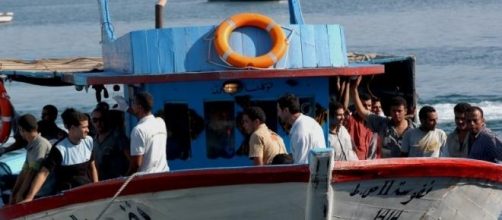Amnesty International's "State of the World's Human Rights" 2015 report, paints a not-so-pretty picture of the international community's efforts of fighting for the rights of those who need it most. At the heart of the report lay the 4 million refugees that have fled the Syrian war, of which 95% find refuge in neighbouring countries. Turkey hosts over 1,6 million refugees, Lebanon over 1,1 million - 1/3 of its population- and Jordan over 600 000, according to the UN agency for refugees (UNHCR).
What about the EU in all of this? On the other side of the Mediterranean, the European Union (EU) claims to take a central part in the Syrian conflict: the European Commission and Member States have unblocked a total budget of 3,1 billion euros in humanitarian assistance.
But to what extent is the EU helping Syrian refugees?
A few hundred thousand out of 4 million refugees: Amnesty International says the EU has fallen short of its international standards on the reception of migrants and refugees. According to Salil Shetty (Amnesty's Secretary General), not only are EU countries hosting very little Syrian refugees, but they are pushing migrants to cross over to Europe illegally. The refugees hosted by EU states represent only 4% of the total amount of Syrian refugees. What more, they are unequally divided between European states, with Germany and Sweden hosting the largest part.
Migrants can either come by their own means - often borrowing the Mediterranean route from Turkey or Libya and reaching Greece or Italy by boat.
Most Syrians prefer going to countries such as Germany and Sweden - where Syrian communities are already well developed. If their asylum application is accepted, they become refugees of the Member State that gave them international protection. Syrians previously recognised as refugees by the UNHCR in war zones, can also be transferred to European countries under their resettlement agreements. This allows Member States to choose the quota of resettlements in their country, under safe circumstances.
The little amount of Syrian refugees hosted in European countries is at heart of a larger, more terrifying problem: the deaths of migrants at sea, mostly from Syria and sub-Saharan Africa, as they try to reach the EU.
The Mediterranean, most deadly migration route: Out of the 218 000 migrants crossing the Mediterranean to reach EU coasts in the past year, 3 400 lives were lost, making it the deadliest routes of all. Migrant smuggling is higher and more dangerous than ever, particularly because well-developed human trafficking networks put migrants' lives at risk.
In response to the shipwreck on the island of Lampedusa in October 2013, Italy launched the "Mare Nostrum" operation, which operated until November 2014, and whose purpose was to detect and save migrants at sea. Due to budgetary restrictions, it was replaced by the Triton operation in November 2014. More securitarian because it's more focused on border control, Triton acts at Italy's borders and not at Libya's.
Mid February 2015, 300 more migrants perished at sea after being forced to cross the Mediterranean in poor weather conditions by smugglers.
Why so little? Increasing resettlement opportunities for refugees in EU Member States and developing legal migratory routes, would not only relieve other countries from part of their efforts, it would also save many lives.
However, in the context of an entrenched economic crisis, with budget cuts and populism on the rise, EU Member States find themselves closing up on themselves … and their borders. The cost of hosting refugees is economical, but also highly political. The booming voice of EU nationals who claim that "foreigners are better off in our own country than we are" is to be hushed. At all costs.

